Trekking the Great Rift Valley to the Serengeti
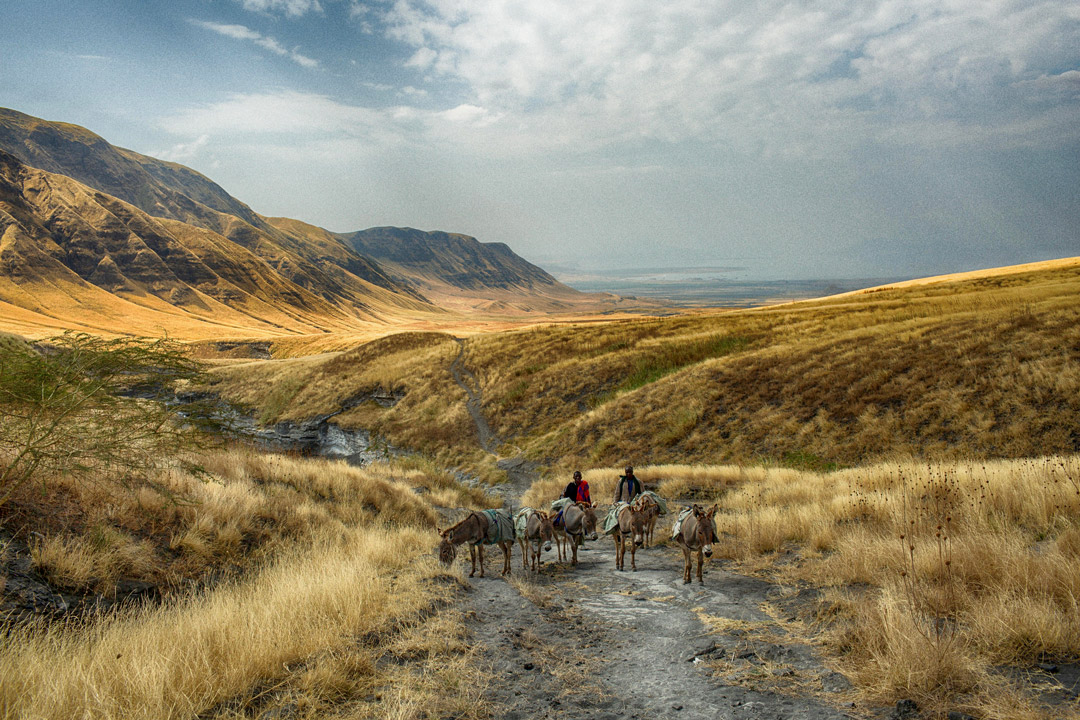

Tanzania’s Great Rift Valley may be a less well-known trekking destination than Kilimanjaro, but the ancient Maasai trails that connect the highland craters to Lake Natron have a magic to them with none of the crowds of the mountain peaks. You’re more likely to run into goat herders than a flock of tourists here. Plus, this route connects the Ngorongoro Crater and Serengeti regions, so you can spend an epic week trekking from one safari to the other. This trip also includes the option to summit Ol Donyo Lengai, an active stratovolcano and the most difficult day hike in Africa.
This itinerary connects the Ngorongoro Crater and Serengeti regions with ancient Maasai cattle trails so that you can spend an epic week trekking from one safari to the other.
✧ Your custom travel playlist includes Mbaraka Mwinsheshe’s “Penze La Mashaka”
Guitarist Mbaraka Mwinsheshe is one of the legends of East African dance music, who made his name in the 1960s as the leader of a popular jazz band. The second half of this song has an infectious rhythm that will lighten your load as you trek across the Tanzanian highlands.

Kilimanjaro Airport and Arusha are the most common first stop on a northern Tanzanian itinerary. The city sits in the shadow of Mount Meru and is surrounded by coffee plantations. We recommend a night at either Legendary Lodge or Arusha Coffee Lodge to shake off the flight before departing on safari the next day.
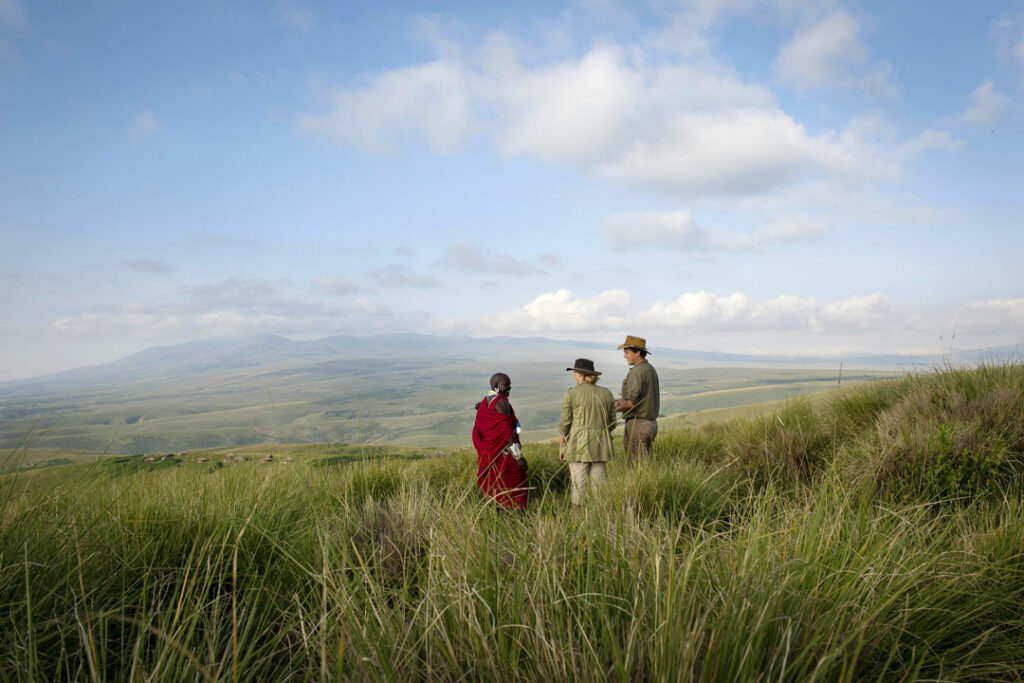
Meet your private car for a four-and-a-half-hour drive to the Ngorongoro Crater the next morning after breakfast. You will stop for lunch, pass coffee plantations, and enjoy a spectacular viewpoint over the crater along the way. The Highlands Lodge is located on the rim of the nearby Olmoti Crater, where you will stay for the next two nights. If you feel like stretching your legs, you can end the day with a guided walk around the crated rim.
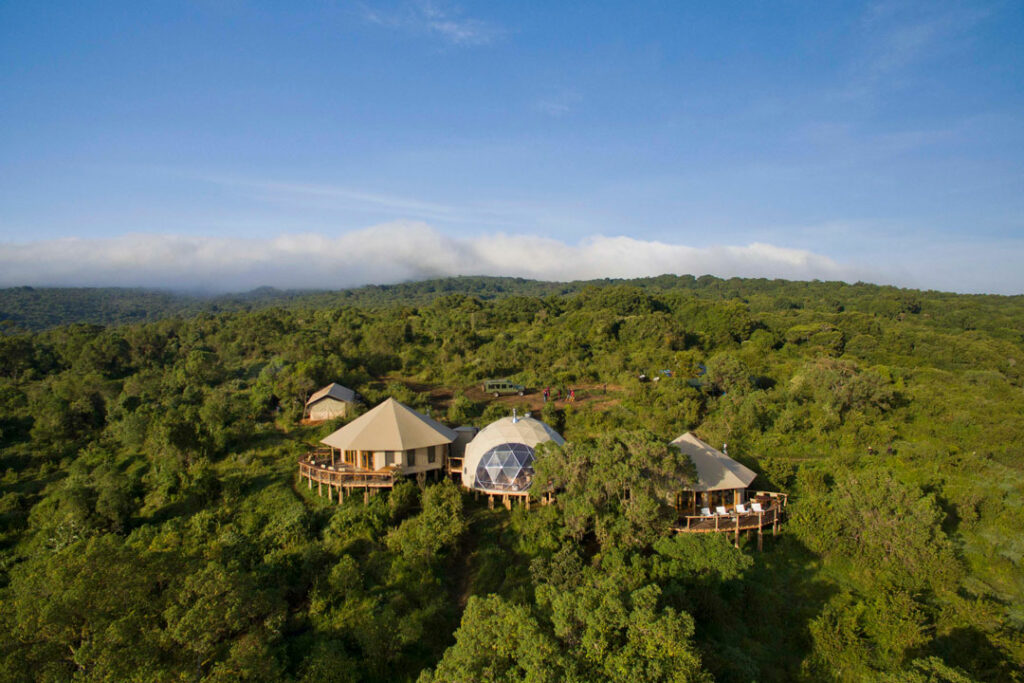
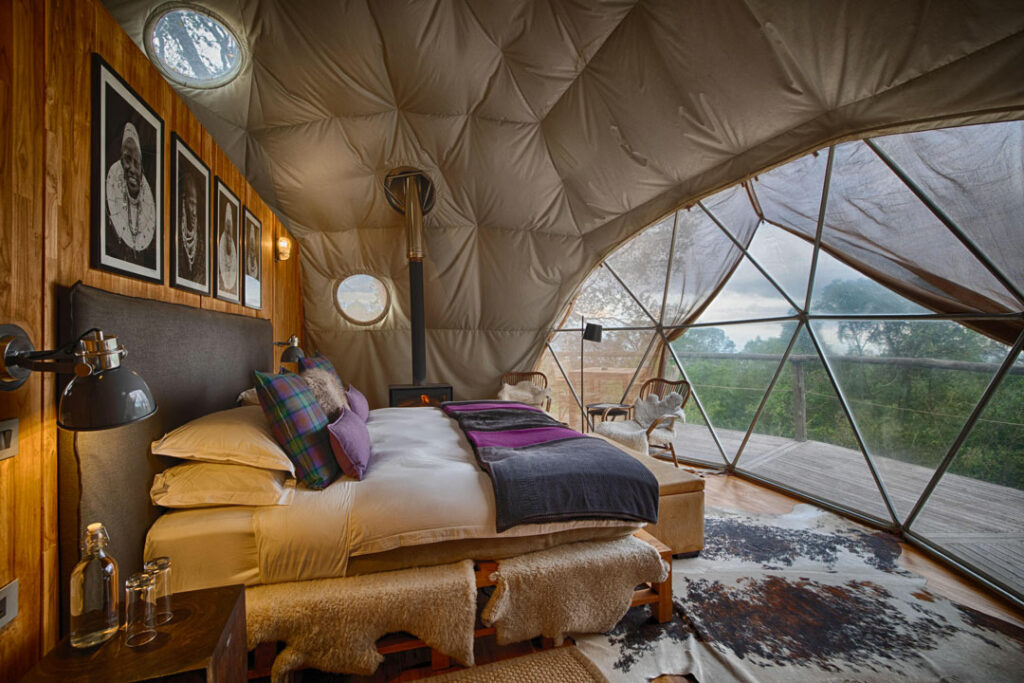
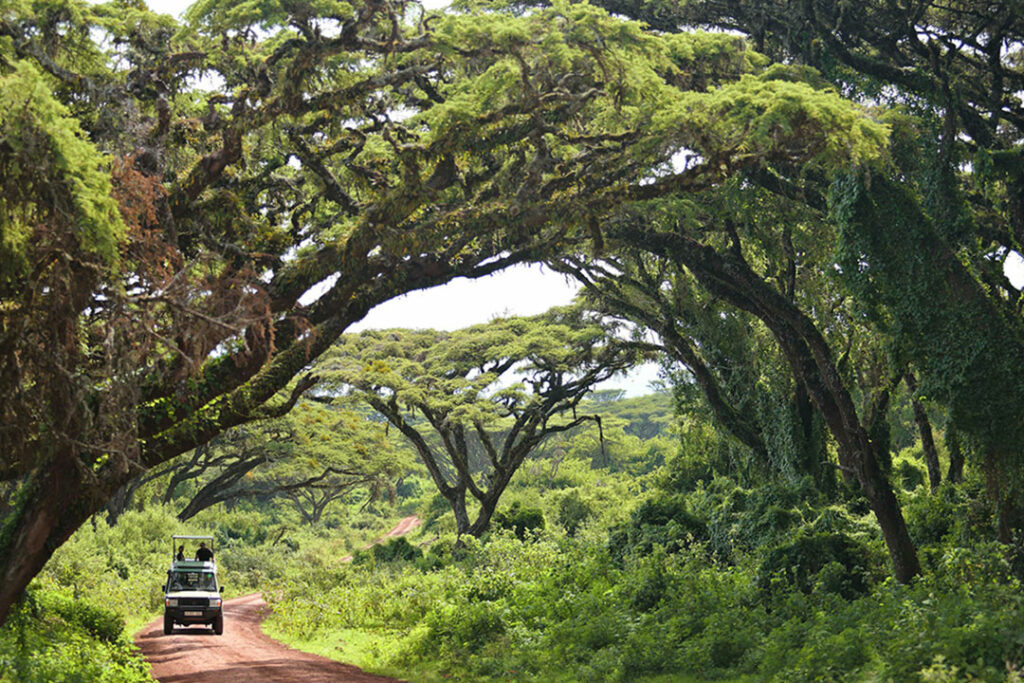
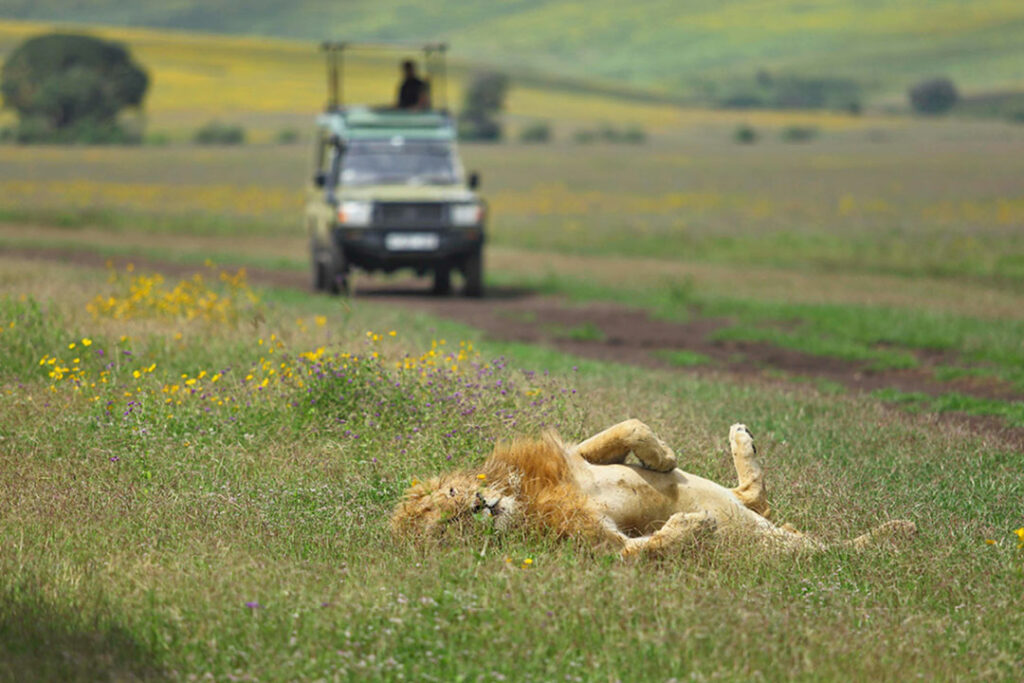
Your guide will drive you to the Ngorongoro Crater for a game drive the following day. Spot lions, elephants, and a diverse array of plains game roaming the crater floor before retiring to the lodge after lunch. You can relax for the afternoon or visit one of the nearby Maasai villages with your guide.
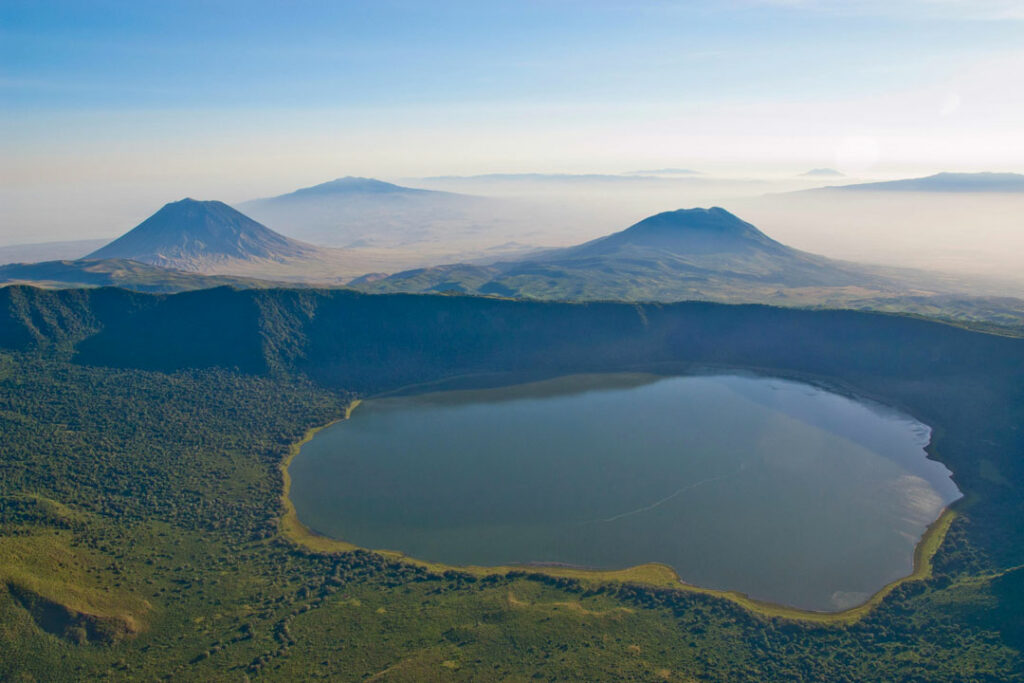
After a leisurely breakfast, drive north to the nearby Empakaai Crater. It’s a steep 40-minute descent from the crater rim to the soda lake below, but it’s worth it for the view. The lake is famous for flocks of pink flamingoes that congregate on its shores. After exploring the crater, return to Empakai Camp. This will be the first night out camping on your trek, but a hot shower is available.
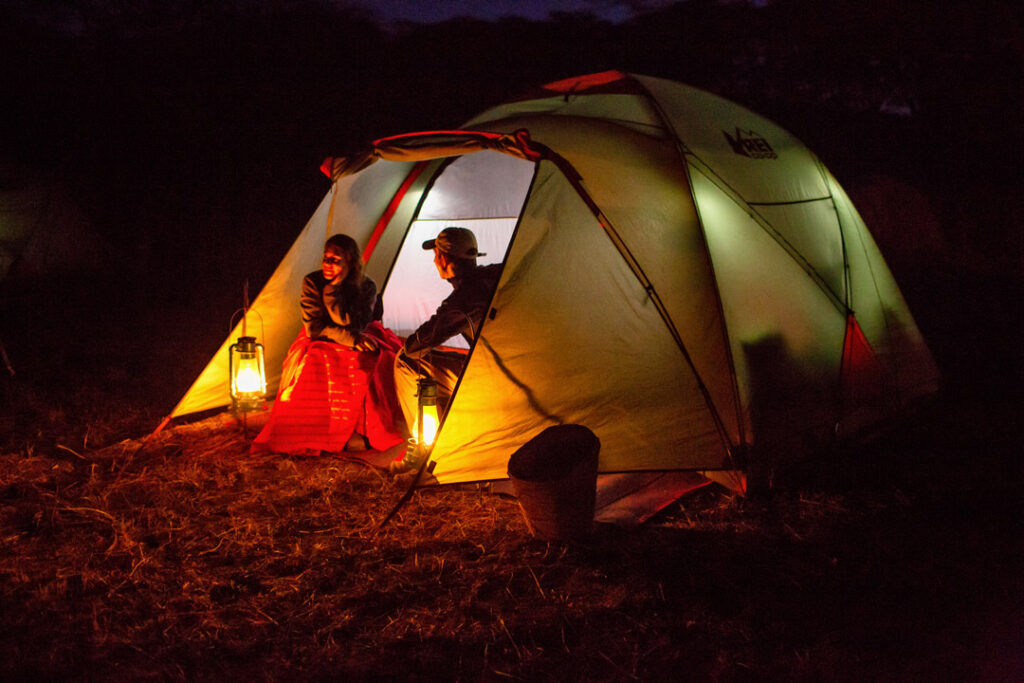
The Sunrise along the crater rim is magical. As breakfast is served, the crew will depart camp with your gear on the backs of donkeys. Maasai guides will now lead you along a route through scenic Maasai villages and rolling hills. It is a little over ten miles to the next camp. You will stop for a light lunch en route and arrive at Leonotis Camp in the late afternoon. A nearby viewpoint is perfect for sundowners to end the day.
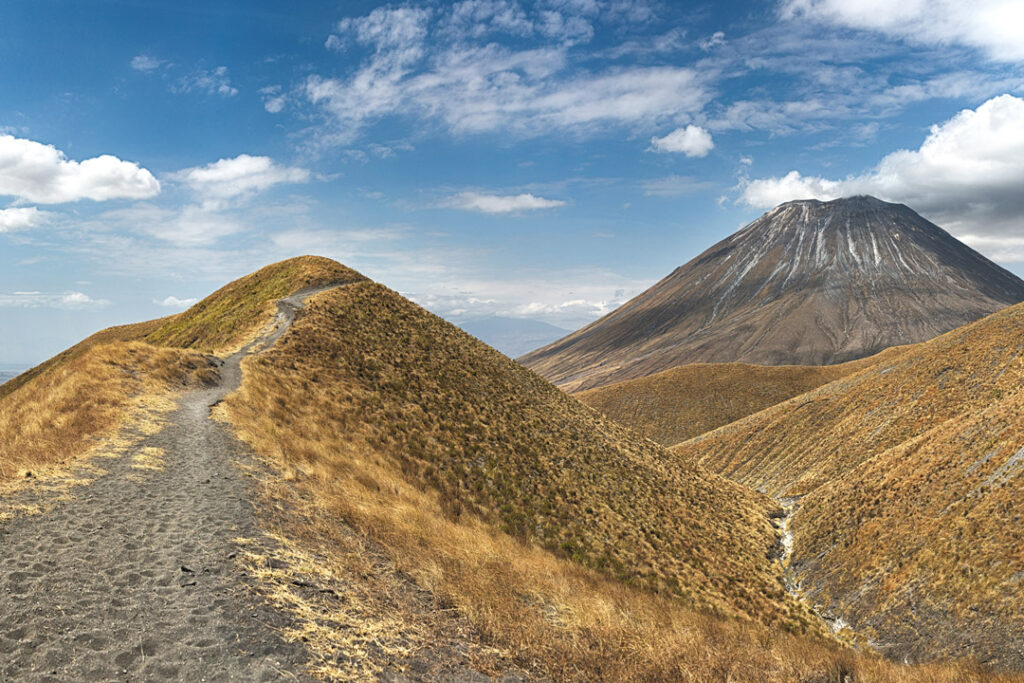
The views on this section of the hike are spectacular, with the active volcano Ol Donyo Lengai dominating the horizon. This seven-and-a-half-mile section of the trail slowly descends into the majestic Rift Valley. Once on the valley floor, you will be picked up and driven another ten miles to Lake Natron Camp, your home for the next two nights. End the day cooling off with a swim in the natural pools before sundowner and dinner at one of the scenic spots around camp.

Spend the next day in the area around Lake Natron Camp. There are short hikes to the Ngare Sero Gorge waterfalls and hominid footprints nearby. This is not a luxury camp, but the tents are spacious and comfortable, and the camp respects the local environment and community.
Trekkers looking to test themselves can try to summit Ol Donyo Lengai, the active volcano that nourishes the Serengeti grasses with its ashes.
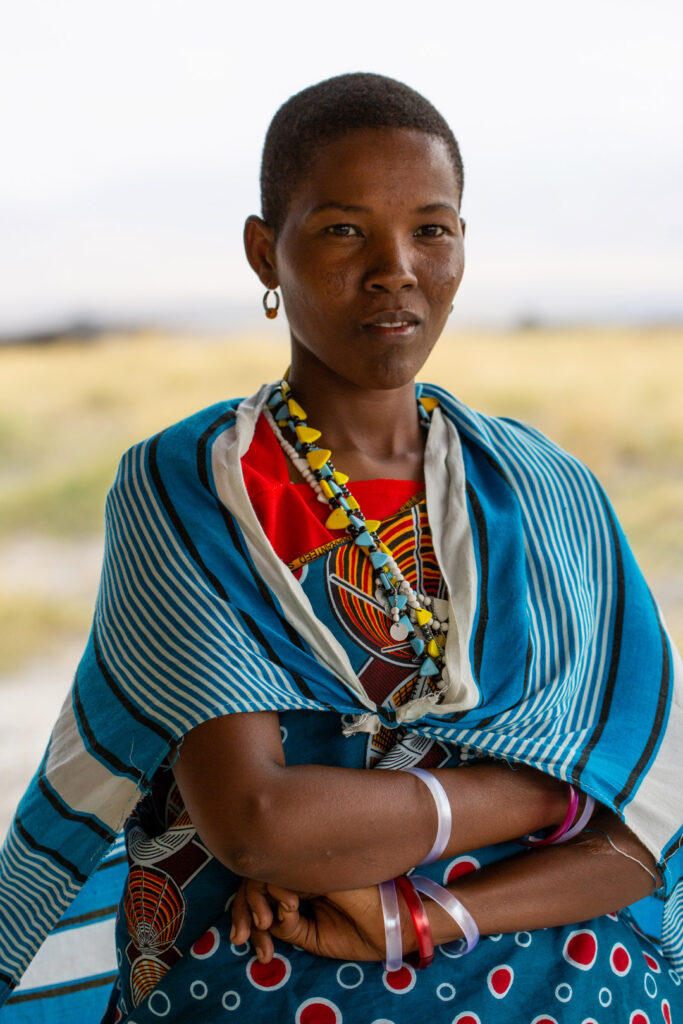
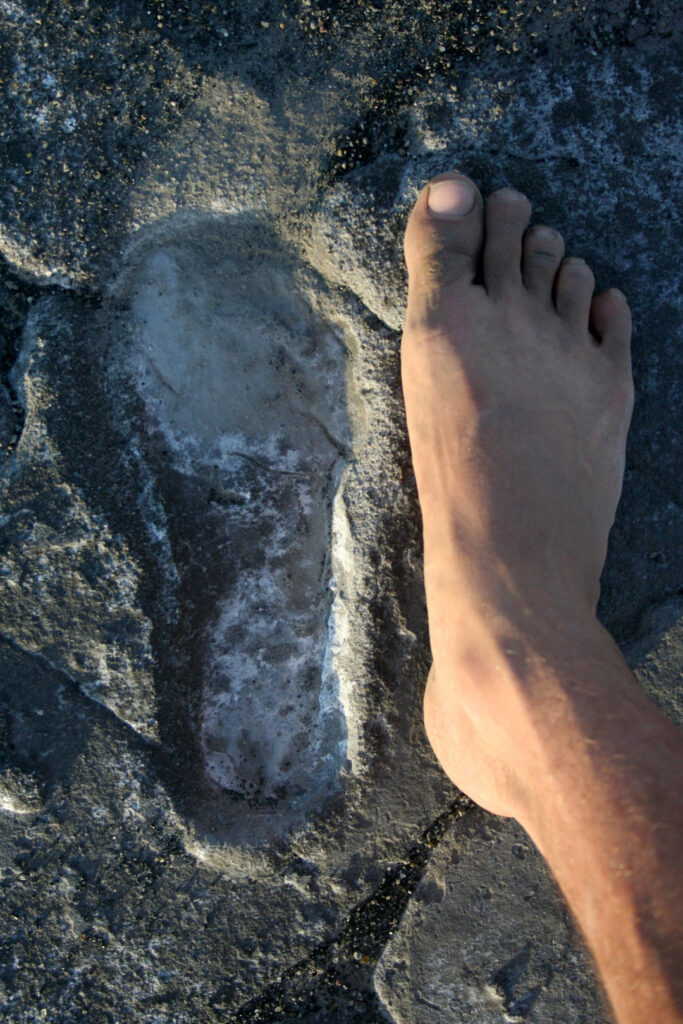
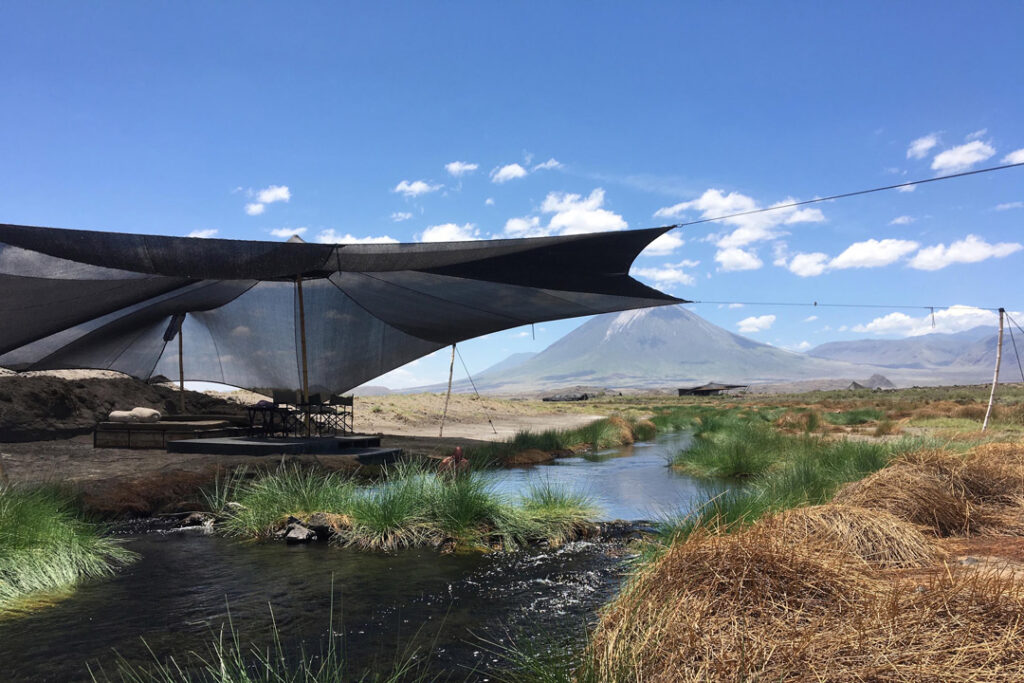
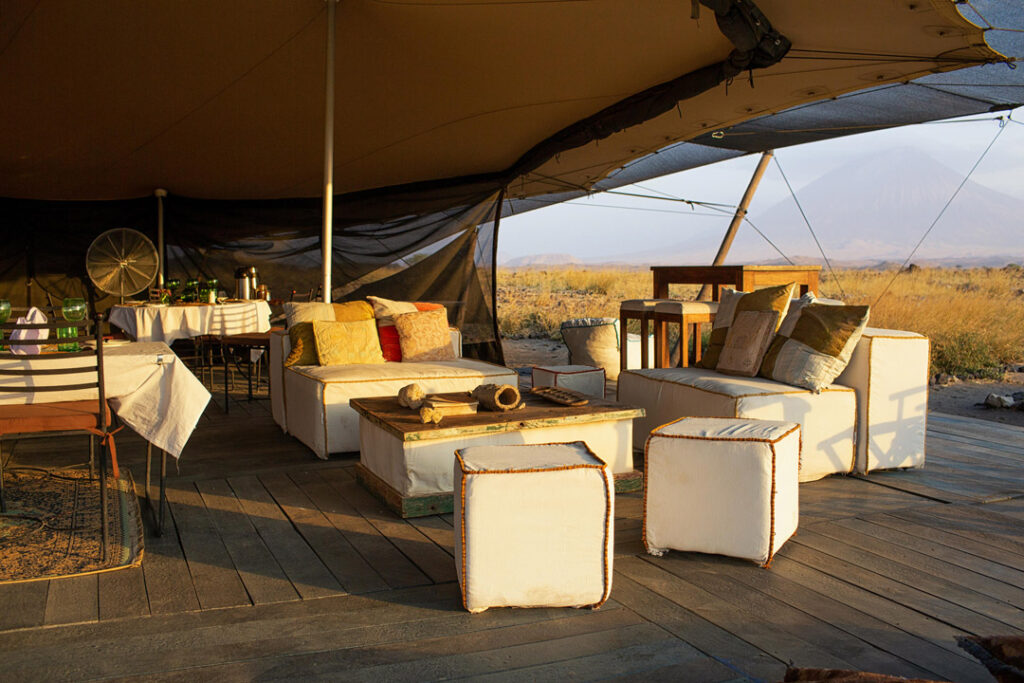
Trekkers looking to test themselves can try to summit Ol Donyo Lengai, the active volcano that nourishes the Serengeti grasses with its ashes. A twelve-hour round trip, it’s the most challenging day hike in Africa. However, you will be rewarded with a breathtaking view from the top. If you choose this option, it may merit an extra day to relax around camp.
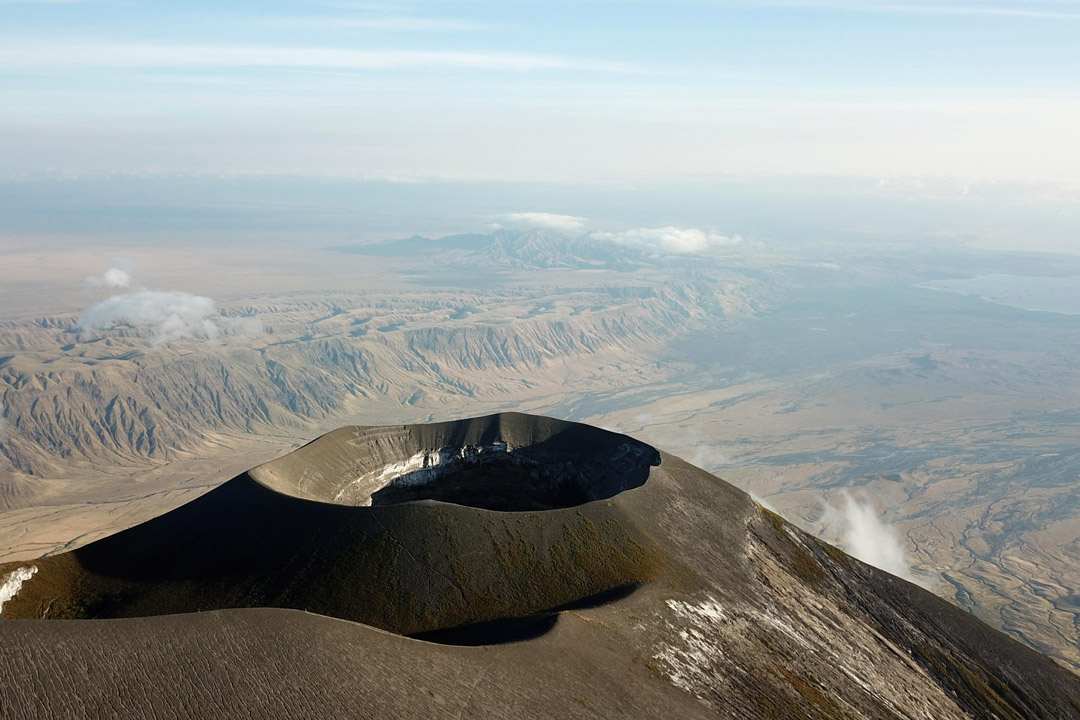
After breakfast, depart on the next leg of your trek to Sanjan Gorge. Following the traditional Maasai cattle routes, this shorter four-mile hike ascends from the valley. You may encounter locals moving their herds to different pastures along the way. Once atop the valley, the driver to take you ten miles across the Salei Plains to Sangan Gorge. It’s possible to see the Great Wildebeest Migration here between December and May. After a picnic lunch, you will arrive at Sanjan Camp at the foot of the Gol Mountains. From there, you can trek deep into Sanjan Gorge or relax by the campfire.
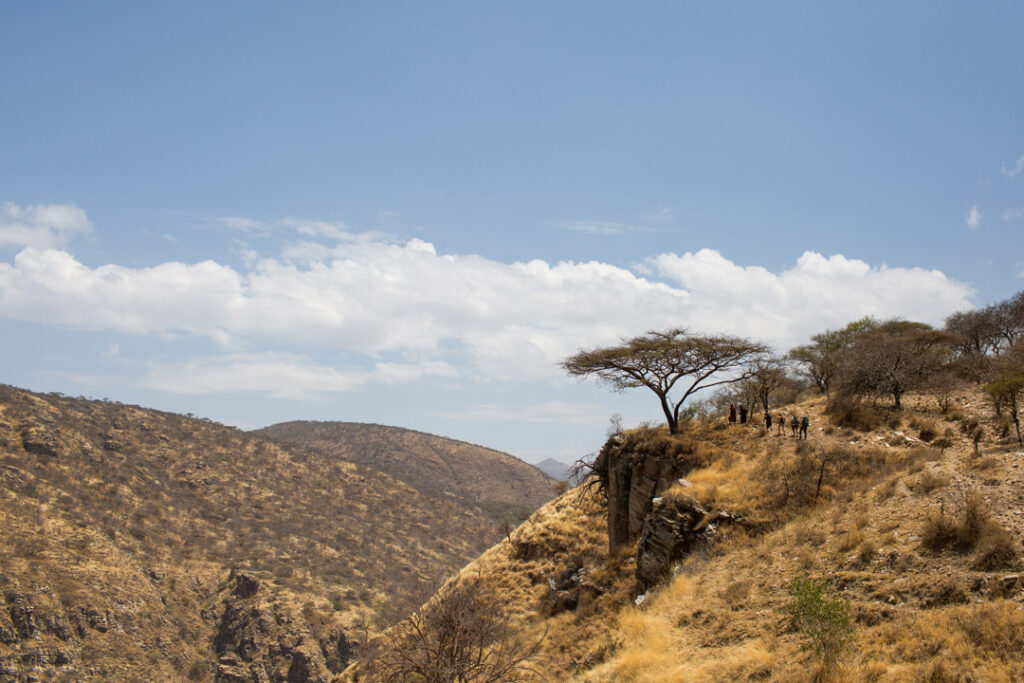
In the morning, bush coffee is served right from the campfire. After breakfast, your Maasai guides will take you along the rim of Sanjan Gorge. It’s a rocky scramble, but the views are stunning. It’s approximately six miles through the gorge, and you will be met at the end by a driver who will take you a short distance to Piyaya Camp.
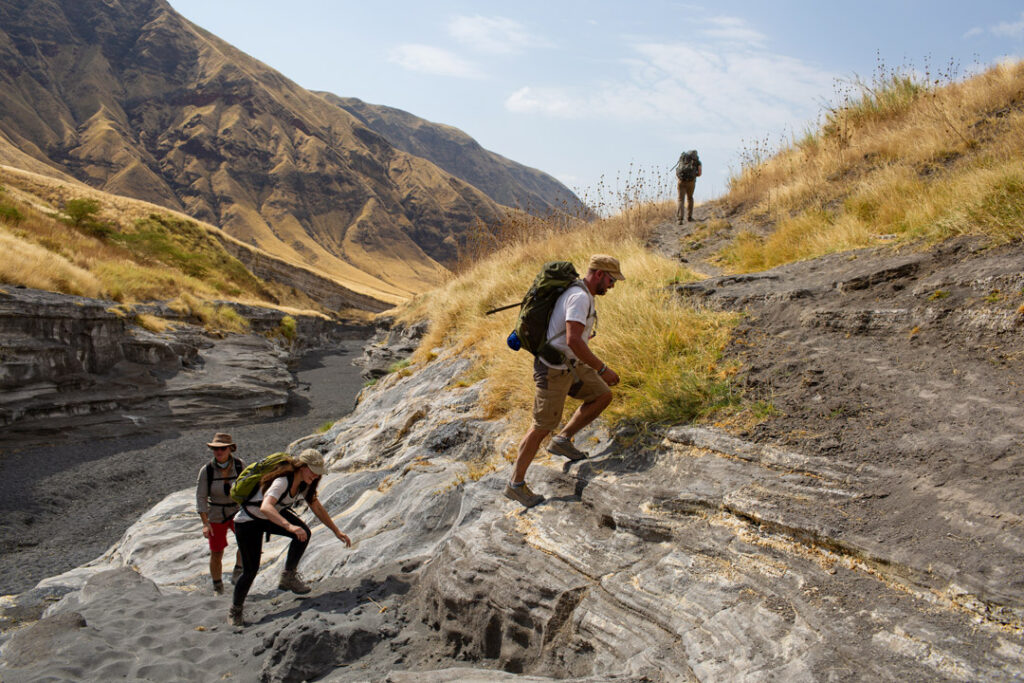
After breakfast, you will be driven to Olduvai Gorge, the cradle of humankind. You can learn about our oldest hominid ancestors at the Olduvai Gorge Museum. After lunch, continue your drive towards Namiri Plains Camp in the Eastern Serengeti. You will arrive by dinner and can enjoy a drink overlooking the vast grassy savannah.

Because of its remoteness, Namiri Plains is one of our favorite camps in eastern Serengeti. The closest neighbor is over an hour away. Before the camp was built, the surrounding grasslands were closed to safaris to let the cheetah population recover, and now the property is a crucial part of their habitat.
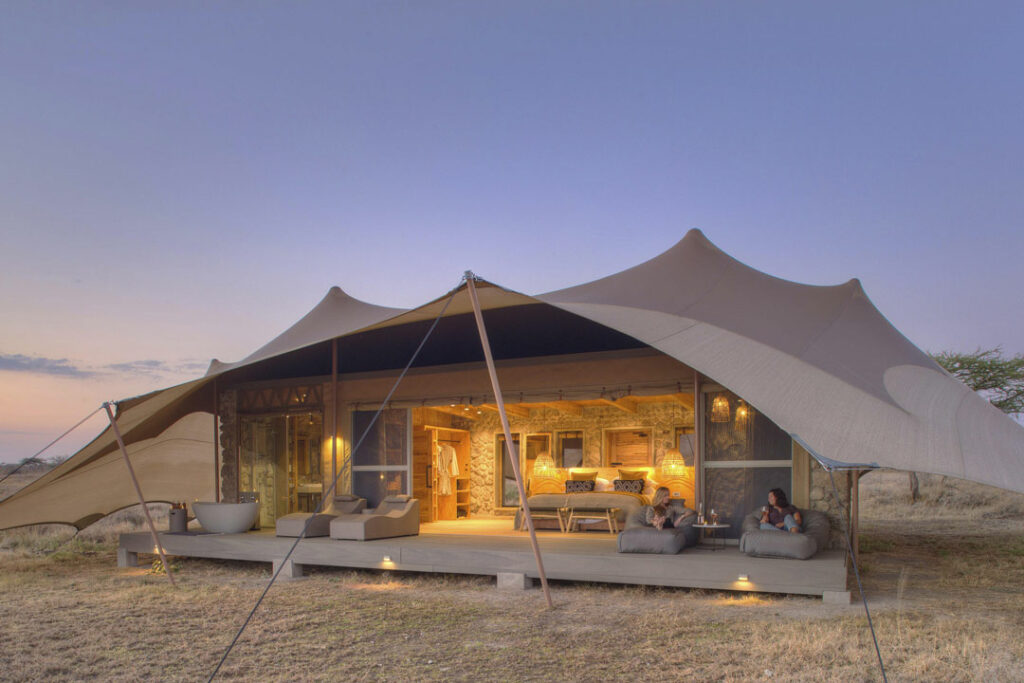
The ten stylish tents are a fantastic place to recover from your trek and take in the majesty of the Serengeti. We suggest relaxing in the pool, soaking in the tub on your deck, or visiting the spa. Then, spend the last few days of your adventure here taking game drives or walking safaris if your feet are still up to it. You will see many of the resident big cats, elephants, and vast herds of wildebeest in season.
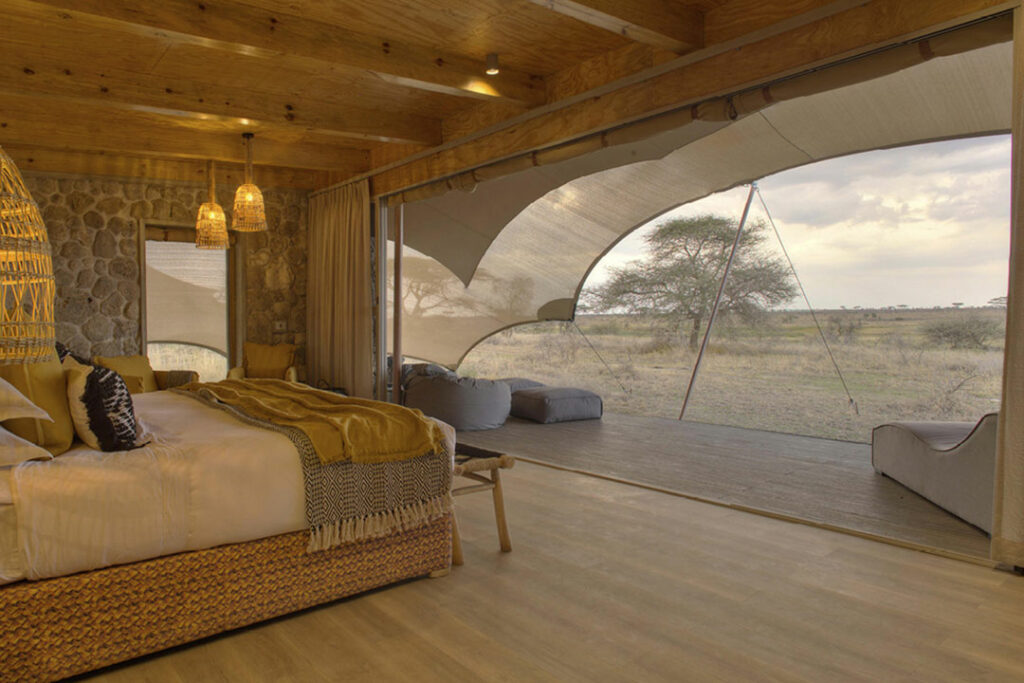
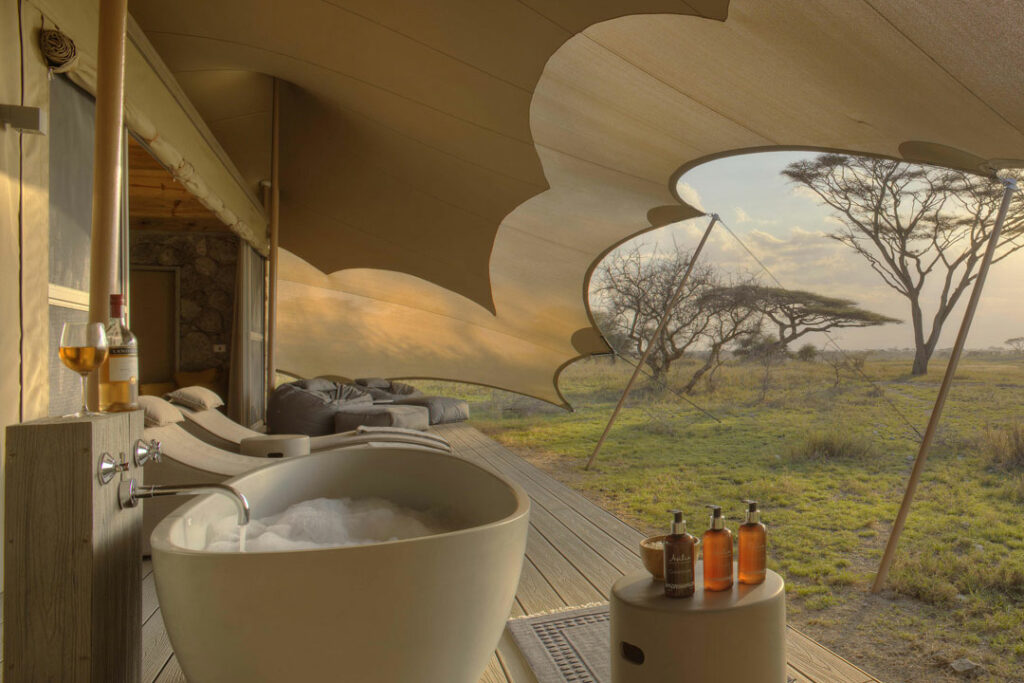
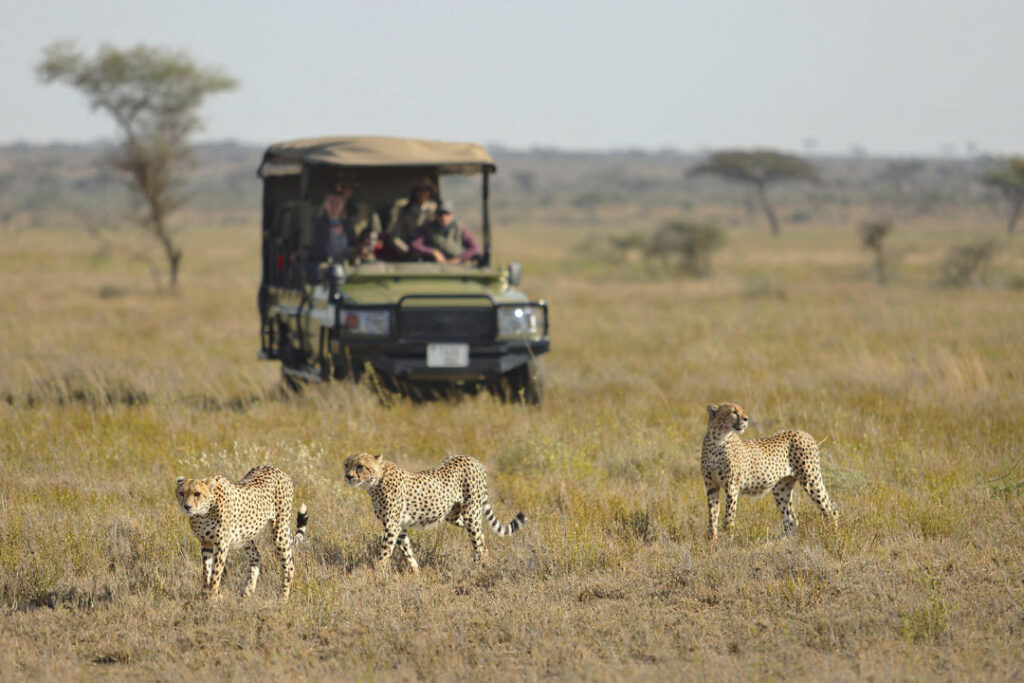
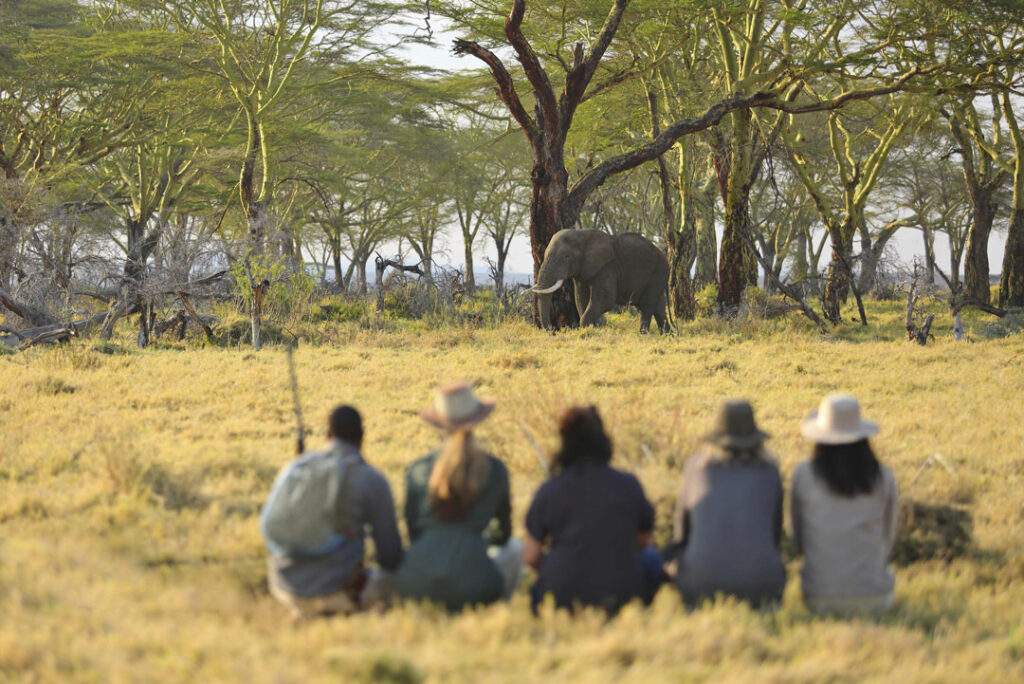
In the morning, drive two hours from the camp to Seronera airstrip for your return flight to Arusha. If you are visiting in June through July and would like to see the Great Migration up close, we recommend flying from Seronera to the Grumeti Reserve, a large private concession on the eastern side of the Serengeti. Many fantastic Singita Lodges are here, but we suggest Faru Faru Lodge for this itinerary. It is more luxurious than a tented camp but more intimate than the larger lodges, with a wonderful view over the Grumeti River.
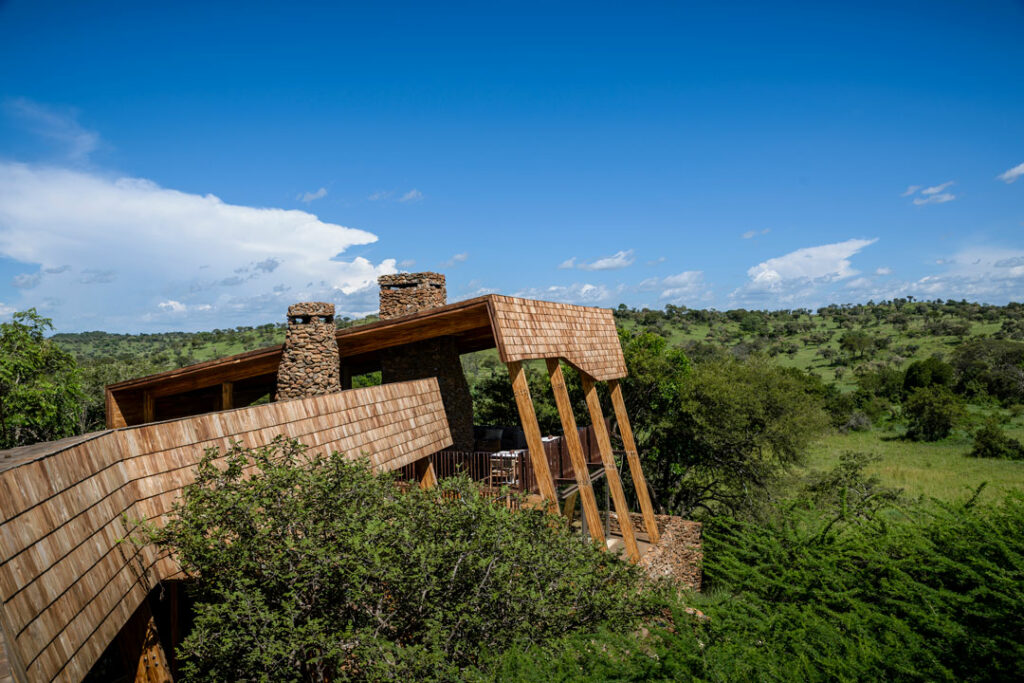

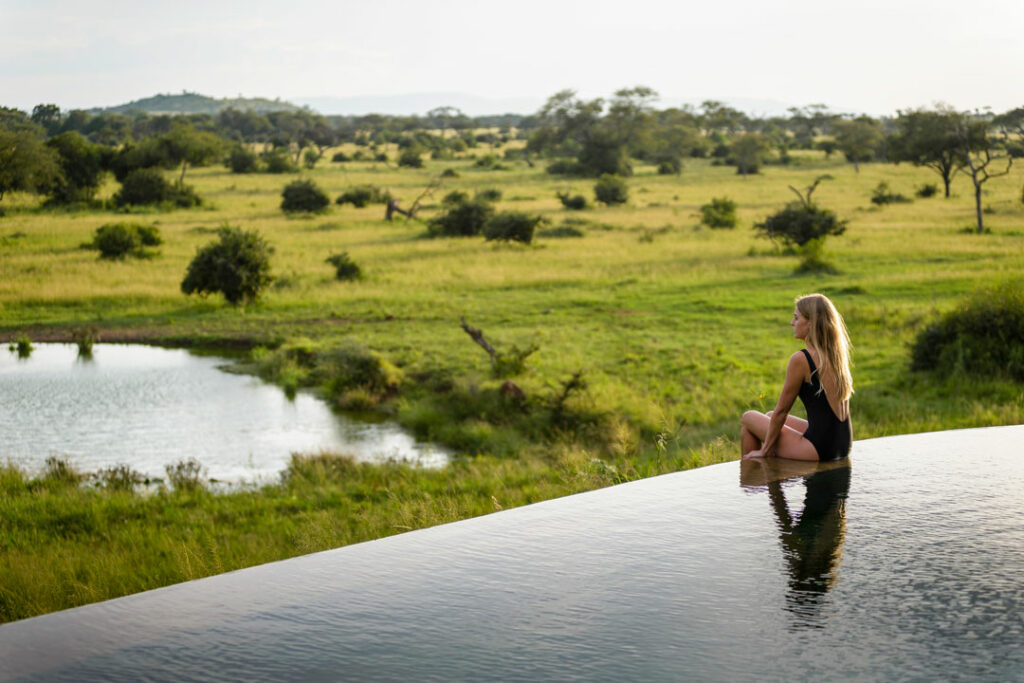
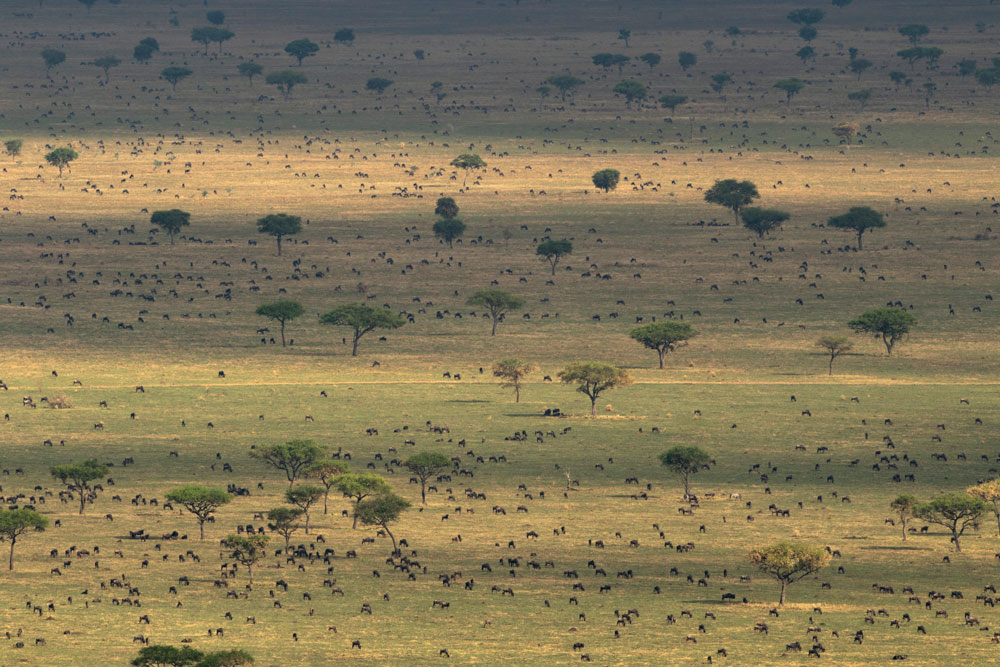
✧ We’ve sent you some reading material, including, The Tree Where Man Was Born
Peter Matheisson’s journals of traveling in East Africa in the 1960s paint a beautiful and complex picture of Kenya and Tanzania. Along the way, you’ll meet people from Maasai herders and biologists and visit some of the region’s most iconic parks in the era before mass tourism. View on Amazon
We combine expert knowlege with creative itineraries to make your travel dreams a reality. Contact us for a free consultation.

Get monthly travel news, destination guides, and seasonal offers delivered to your inbox.